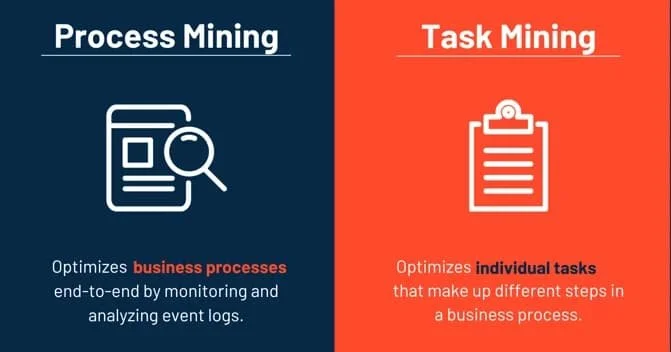Smart Lean: Eliminating the Hidden Wastes of Transport and Motion with AI
Fixing What You Can’t See: Removing Inefficiencies Waste Between and Within Roles
Imagine vital medical records trapped in digital silos, delaying a specialist’s diagnosis. Or a banking customer shuffled through three departments, repeating their story each time. That’s transport waste: the needless movement of work between people, systems, or departments.
Step behind the scenes: an agent toggles through five apps to build a customer profile; another digs through inboxes and shared drives for the latest document. This is motion waste: extra clicks, searches, and screen‑switching inside a single role.
In service operations, these disruptions are digital, invisible and pervasive. But their cost is all too real. According to McKinsey, knowledge workers spend nearly 20% of their day just searching for information. Meanwhile, Harvard Business Review reports that employees switch between applications 1,200 times a day, equating to nearly five weeks per year lost to digital friction.
To run truly Lean, we must surface and eliminate both types of operational drag. Left unchecked, one clogs workflow across the organization, while the other wears down the people advancing it, slowing momentum, inflating costs, and eroding experience.
* “The social economy: Unlocking value and productivity through social technologies,” McKinsey ** Harvard Business Review, “Stop the Meeting Madness,” 2023
Detecting Invisible Inefficiencies
Ask yourself the following questions:
Are employees hunting for documents, data, or the right person? (M)
Do requests or tickets bounce between teams before resolution? (T)
Is data being reentered across systems due to poor integration? (T&M)
Are workflows cluttered with redundant steps or unclear handoffs? (T&M)
These patterns rarely appear in dashboards, but they drain time and focus.
To surface them, use:
Value Stream Mapping to trace work end-to-end.
Process Mining to spot detours and rework.
Task Mining to capture user-level friction like toggling, scrolling, and copy-pasting across apps.
Employee Interviews or Shadowing to expose hidden Motion waste.
Once these issues are visible, streamline or eliminate them before considering automation. Lean first, then AI.
The KPIs That Reveal Workflow Waste: FCR and Time to Retrieve Information
A key indicator of operational flow in services is First Contact Resolution (FCR). It tracks whether a customer issue is resolved during the first interaction, without being passed between agents or systems. Industry standard is 70-79 % and world-class is ≥ 80 %*. Low FCR often signals unnecessary handoffs, disconnected knowledge, or fragmented workflows, classic signs of Transport waste.
To detect Motion waste, the time employees spend navigating systems or searching for information, another metric is essential: Time to Retrieve Critical Information. It shows how much time is lost inside the task, before anything moves. Keep it under 60 seconds for critical items once motion waste is gone and around 20 seconds with AI.
To get a full picture of friction, pair FCR and Time to Retrieve Critical Information with:
Digital Handoffs per Workflow (Transport)
System Toggles per Task (Motion)
Customer Wait Time (Both)
These KPIs expose excess movement that slows teams down even when outputs look fine.
Root Causes: The Hidden Drag Slowing Your Service Velocity
Transport and Motion waste often show up as delays, rework, or redundant effort, but their causes lie deeper in how work is structured and systems are connected.
Here are the most common sources of operational drag:
Fragmented Systems
Siloed apps, duplicate databases, and missing API bridges force teams to re‑enter data, chase files, or hop between platforms, digital Transport in every click.
Cluttered Processes
Legacy approval chains, unclear handoffs, and “just‑in‑case” steps create detours and rework, multiplying Motion and slowing flow.
Manual Workarounds.
When integrations fail or tools can’t talk, employees stitch together spreadsheets, copy‑paste data, or swivel from screen to screen, creating shadow workflows that drain efficiency.
Hidden Knowledge Silos
Critical information stuck in inboxes or tribal memory drives staff to hunt for answers and the right person, shifting focus from value‑adding work to search and clarification.
Identifying these issues is the first step to removing unnecessary movement between roles and within them. The payoff: less friction, more capacity, and smarter flow driven by Lean and AI.
Accelerating Flow: How AI Removes Operational Slowdowns
Lean thinking pinpoints everything that doesn’t create value; Artificial Intelligence supplies the power tools to erase it at scale. The aim isn’t to push waste through the pipe faster. It’s to make the pipe shorter, straighter, and friction-free.
2. Map & Predict
Process-mining and task-mining engines reveal hidden loops and bottlenecks, while predictive routing keeps each task on the fastest path.
Expose handoffs that ping-pong between teams or systems
Direct requests to the right agent or microservice before they stall
3. Guide & Automate
Virtual assistants and chatbots walk users through streamlined workflows or complete routine steps end-to-end.
Handle FAQs, gather data, and retrieve docs without escalation
Slash back-and-forth messages and free people for higher-value work
Together, these three capabilities wipe out the digital detours between roles (Transport waste) and the click fatigue within a role (Motion waste). The result isn’t just faster work; it’s smarter flow, where tasks move only when, where, and how they should.
The AI toolkit in three tight buckets
1. Find & Extract
Natural-language processing (NLP) and semantic search surface the exact data or document in seconds, ending tab-hopping and file hunts.
Auto-lift key fields from emails, PDFs, or chat logs
Instantly return the right file from scattered drives and legacy portals
Do not automate complexity. Simplify first.
What You Gain When Flow Replaces Friction
When Lean thinking is combined with AI, the result is not just efficiency, it is operational flow. By removing unnecessary movement whether between roles and systems or within tasks and tools organizations recover time, focus, and capacity lost to friction.
Replacing excess movement with AI enabled flow:
Frees employee capacity for meaningful work
Reduces errors from repeated entry and manual transfers
Accelerates service by delivering the right information at the right time
Improves morale by eliminating repetitive tasks
These improvements build over time, driving smoother operations, better outcomes, and stronger customer and employee experiences.
Real-World Examples
Klarna Eliminates 25% of Repeat Inquiries with AI Customer Assistant
Klarna, a global leader in “buy now, pay later” financial services, faced increasing complexity in its customer service operations, where human agents managed high volumes of repetitive inquiries. Each case often involved handoffs between teams, slow routing, and duplicated effort, resulting in longer resolution times and fragmented customer experiences.
To streamline support, Klarna deployed a generative AI-powered customer service assistant based on OpenAI technology. Integrated into the company’s digital service infrastructure, the assistant handles inquiries end-to-end, reducing the need for manual escalation, repetitive data entry, and inter-agent transfers. The solution delivers responses in real time and can manage both simple tasks and more complex product searches, freeing agents for higher-value interactions.
Results:
Repeat customer inquiries dropped by 25%
Average resolution time reduced from 11 minutes to under 2 minutes
$40 million in estimated annual profit impact in 2024
By eliminating redundant handoffs and automating request routing, Klarna’s AI assistant addressed a critical form of digital transport waste, ultimately accelerating resolution and improving customer satisfaction.
Sources:
BCG, “How AI Agents Are Opening the Golden Era of Customer Experience,” 2025
Klarna press release — “Klarna AI Assistant Handles Two-Thirds of Customer Service Chats in Its First Month” (February 27 2024)
OpenAI x Klarna announcement, March 2024
Lloyds Slashes Agent Search Time 66 % with “Athena” AI Knowledge Hub
Lloyds Banking Group, the UK’s largest retail bank, found that frontline staff were spending nearly a minute sifting through 13,000 internal articles to answer routine customer questions, an everyday form of Motion waste. In early 2025 the bank launched Athena, a generative-AI knowledge hub that semantically searches that content and delivers the exact answer in seconds.
Results
Search time cut from 59 s to 20 s (-66 %)
≈ 4,000 agent hours saved every year in telephone-banking teams
21,000 employees, 2.1 million searches in the first half of 2025 (targeting 40 million by year-end)
By removing screen-hopping and document hunts, Athena turns lost time into flow and frees agents to handle complex issues.
Sources:
PYMNTS, “Lloyds Bank Rolls Out Generative AI Tool Athena,” July 16 2025
Finextra Research “Lloyds trumpets GenAI knowledge hub’s impact,” July 15 2025
Conclusion: Eliminate the Invisible to Unlock Real Flow
Transport and Motion inefficiencies are not small, they are just hidden. Handoffs, toggles, repeated searches, and reentry may seem routine, but they quietly erode time, energy, and performance.
Lean thinking helps us recognize what does not create value. AI gives us the tools to remove it, but only when used with intent. The real win is not speed. It is clarity. It is flow.
When organizations remove unnecessary movement between systems and within tasks, they unlock capacity, improve service, and give people the space to focus on what matters.
By eliminating the operational drag with AI enabled strategies, businesses not only streamline internal workflows, but also deliver superior outcomes to customers: faster answers, fewer touchpoints, and effortless service from start to finish.
This is how smart operations scale not by working harder, but by removing what gets in the way.

@ 2025 Lean Bizness Inc. | Strategy Through Execution
Based in North America | Working with clients across North America and internationally
[ Privacy Policy ] [ Terms of Use ]







